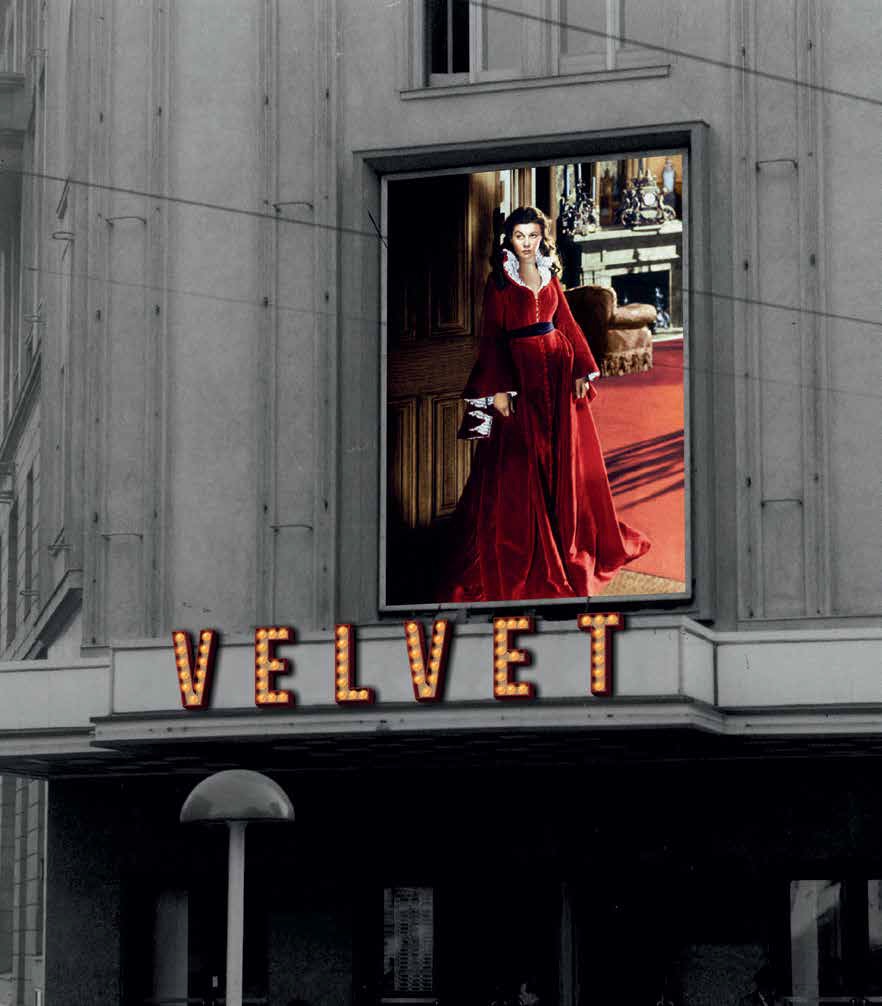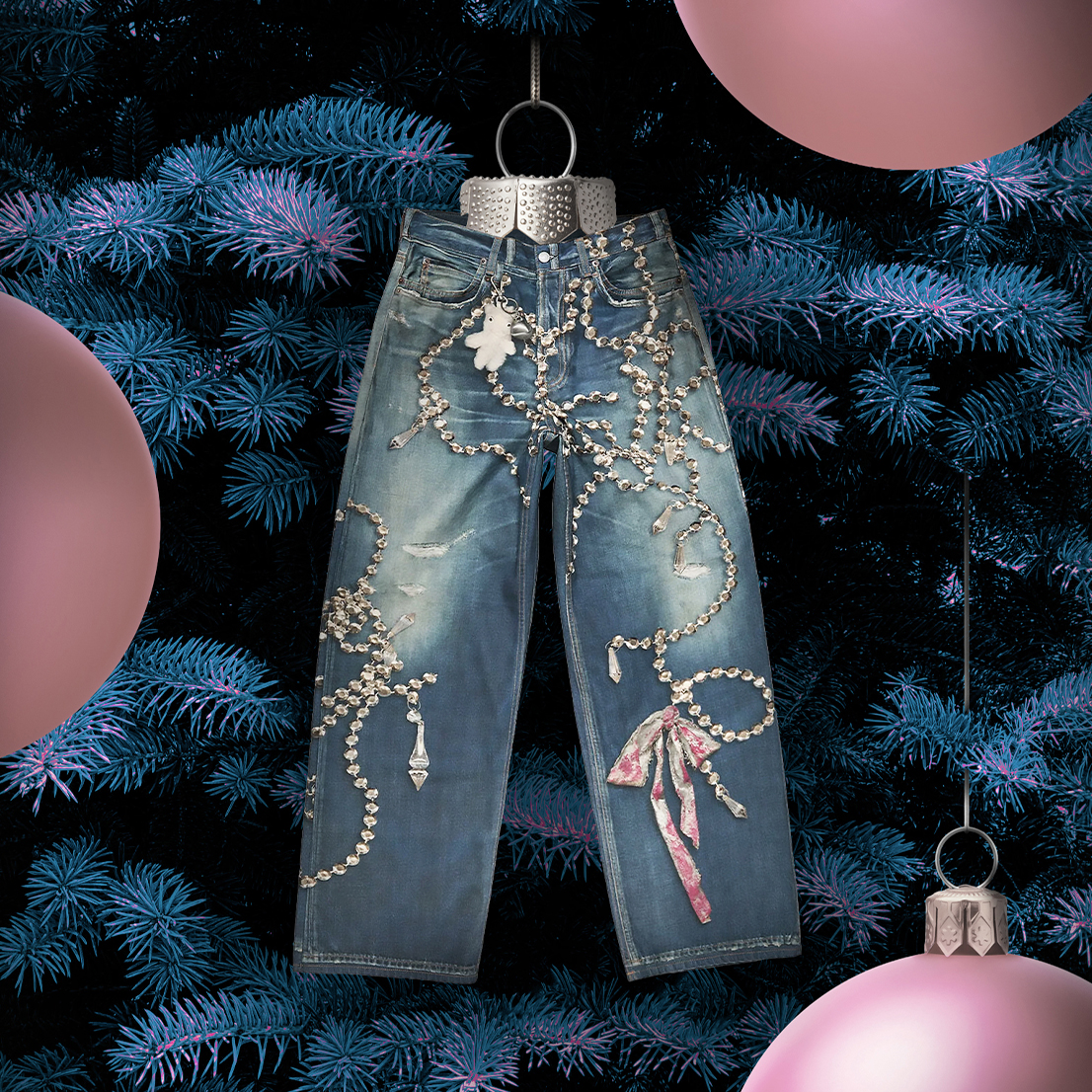The history of velvet is intertwined with the history of the world. It is the perfect medium to explore not only its past but some of its most celebrated characters.
The history of velvet is intertwined with the history of the world. It is the perfect medium to explore not only its past but some of its most celebrated characters.

Luigi Bevilacqua Tessitura. This is the name of the last traditional velvet producer in Venice. Since 1499, the Bevilacqua family has been in charge of delivering the most luxurious material in history to some of its most important figures. From aristocrats to popes, the Italian craftsmen were responsible for the influx of material in the luxury market of the past. At one time the company had over a hundred workers, but these days that number is down to a mere seven. It is these few weavers who are in charge of preserving the priceless heritage of Venetian velvet. The fabric is produced in the same workshops that were once teeming with life and are now crowded with empty looms. The production of such a fabric no longer fits into a world that values the immediate over the traditional. Each fabric produced by Tessitura Luigi Bevilacqua is made the same way it was 300 years ago, line by line, completely by hand, requiring dedication and patience which is increasingly rare. Venetian velvet, more than manufacture, is an art, one of the most transversal symbols of luxury in the world. From Egyptian pharaohs to Danish monarchs, many have worn the fabric over the centuries as the ultimate status symbol. But the history of velvet did not write its first page in the Italian province of the 14th century. Instead, it goes back to a past recognizable only in fairy tales. Velvet is the thread that connects that world to ours, the thread that weaves the history of the world.Velvet. Three syllables hide in themselves the historical depth of the fabric. Originating from the Latin vellutus, or vellus, meaning "full of hair" or "animal skin", respectively, its etymological origin reveals the ancient beginnings of the fabric. Long before invading the European Renaissance markets, even before medieval times, velvet dates back to the city of Baghdad in 786. No, we have not forgotten a digit, the origin of the material goes back to a time when the years were written with only three numbers. Some historians theorize that the technique to produce velvet may be much more ancient, going back two millennia, to the beginning of the Common Era, read 2000 B.C.E. Velvet, like materials such as satin, are more correctly described as production techniques rather than materials themselves. Velvet's texture is achieved through a detailed and complex process, especially at a time when producing it by hand was the only option. If its "modern" origin dates back to the Middle East, at a time when the monopoly of its production was concentrated in Egypt, as the world communicated with each other, its center redirected to Europe.
The trade routes of the ancient world introduced velvet to the European market where, almost immediately, it bewitched the upper strata of the social hierarchy. Thanks to its sumptuousness, it became the material par excellence of the robes of monarchs, ecclesiastics, and even palace interiors. European royalty and aristocracy saw (or rather felt in their hands) the fabric as the ideal metaphor to represent the distance between their counterparts. If the people could barely afford linen, the privileged of that world chose to wear a complex, heavy, inaccessible material. The obsession with the exclusivity of the material was such that veritable laws were created to ensure that only a select group of people could wear it. Yes, the obsession with exclusivity in fashion is not recent, it is millennial. If we think gatekeeping clothes on Instagram is bad, imagine how to mean the Renaissance nobility was to apply death sentences to anyone who wanted to replicate their garments. This is exactly what the English King Henry IV did in the 15th century, forbidding all those who were not aristocrats from wearing the fabric.
Velvet is peculiar not only for the complexity of its production but also for its appearance - the mesmerizing way it reflects light has captivated the attention of some of the most important artists of all time. Legends like Michelangelo or Leonardo da Vinci were busy trying to master the technique of fabric production. The fascination of the artistic class was not only manifested in attempts at production, its representation was established as an immense concern. How could painters ensure that all the sumptuousness of velvet was impeccably reproduced on canvas? Of course, the painting was not the only medium in which velvet found its artistic representation, also in literature, there is a multitude of writers bewitched by the fabric. Think of Leo Tolstoy's Anna Karenina, a narrative described by critics as a storm of velvet and intrigue. The comment is not unfamiliar; over more than eight hundred pages the mythical Russian writer details the story of the eponymous character as she succumbs to the decadence of love and embarks on a tragic journey toward madness - and, eventually, death. Anna's journey is so inspiring that numerous television and film productions have already taken to putting color on Tolstoy's words. In a very unsurprising way, velvet costumes cut across all these films and series, not only for historical accuracy but also for the metaphorical value of the fabric. Latent desire, impending scandal, and inevitable disaster are somehow perfectly portrayed by velvet. But no other work uses the metaphor of the material as effectively as Gone with the Wind (1939). In the classic film, the character Scarlett O'Hara tears the (green) velvet curtains from her living room to transform them into an elegant dress. This desperate act is consistent with the state of her character: the spoiled girl becomes a collateral victim of the American Civil War and ends up in penury, like many of her compatriots. Turning the curtains into a piece of clothing is just a way of trying to replicate wealth, a symbol of a status she no longer possesses.
Of course, if we are looking for the metaphorical value of velvet, we don't need works of fiction, even those of the highest caliber. We need only think of historical figures like Marie Antoinette who, in the shadows of velvet, prophesied her inevitable tragedy. From the age of thirteen, the infamous Queen of France replaced the flowers that adorned her long hair with velvet ties, the perfect analogy for the taste for the decadence that would define her for eternity. Marie Antoinette, an eternal style icon, was the ultimate inspiration for French Fashion. Known for her sense of style, the seemingly endless resources of the Crown allowed her to set the trends of the day. Velvet robes à la française were popularized by the Queen who, even compared to the higher strata of the aristocracy, excelled in the luxury of her dresses. Regardless of her fateful fate, Marie Antoinette's influence is perceptible today: designers as distinct as Christian Dior, Vivienne Westwood, Christian Lacroix, or Thierry Mugler use the queen's luxurious aesthetic as a reference point. From muse to muse the history of Fashion is built, and if Marie Antoinette's velvety legacy reaches the present day, others exist that inform in an equally significant way the way we think about fabric. John Galliano, Karl Lagerfeld, and Alexander McQueen are just three of the titans who have drawn inspiration from Marquise Luisa Casati. Known for her style, passion for drama, and patronage, Casati was an heiress to one of Italy's largest fortunes in the late 19th century. Orphaned at an early age, by the age of fifteen Luisa Casati was the richest woman in her country. But this is not her only relationship with the world of Fashion. Inspired by designer Paul Poiret, painter Augustus John, and writer Jean Cocteau, Casati lived obsessed with the idea of becoming a work of art. With money and connections, Marquise was one of the most influential characters of her time. Her parties were legendary, dens filled with the most important figures in the world - Picasso himself recounted the eccentricity of her dinners. Her taste for extravagance was reflected in her style, from sumptuous velvet robes adorned with feathers to gold-painted snakes (conveniently sedated, of course) adorning her neck, Casati was a true force of nature. In a way, the heiress was the last representative of the true decadence associated with velvet. The open hedonism with which Casati commanded her life inspired the greatest artists of her era, just as velvet had done centuries before. But this was also the reason for her downfall: by the age of 49 Casati had accumulated a debt of over $25 million, and, forced into exile in London, she also extinguished the passion with which she had previously lived.
Velvet has never ceased to be a constant since it was introduced to the world centuries ago, but its meaning has changed almost completely. Moving further and further away from the exclusivity of the past, throughout the 20th century different aesthetics instrumentalize the fabric. From the fun 60s to bohemian and hippie culture, from the crop tops of the '90s to the loungewear sets of fast fashion brands, velvet adapts to the world we live in. Needless to say, the manufacture of velvet is all but extinct, replaced by robotic industrial processes. Most of the velvet you find today is composed of synthetic materials such as polyester or viscose. Even the so-called silk velvet is largely blended with rayon, a synthetic mesh. We end our journey where we started it, in the rooms filled with empty looms, one of the only places that retain the original manufacturing process. The history of velvet is, in large part, the story of a certain past that is no longer returning. A fabric that, by its beauty alone, conquered humanity. Inevitable symbol of a fossilizing art, velvet is a relic of an ever more distant world.
Translated from the original on "The Velvet Touch" issue of Vogue Portugal, published December 2022.Full stories and credits on the print issue.
Most popular

Relacionados
.jpg)
.jpg)





